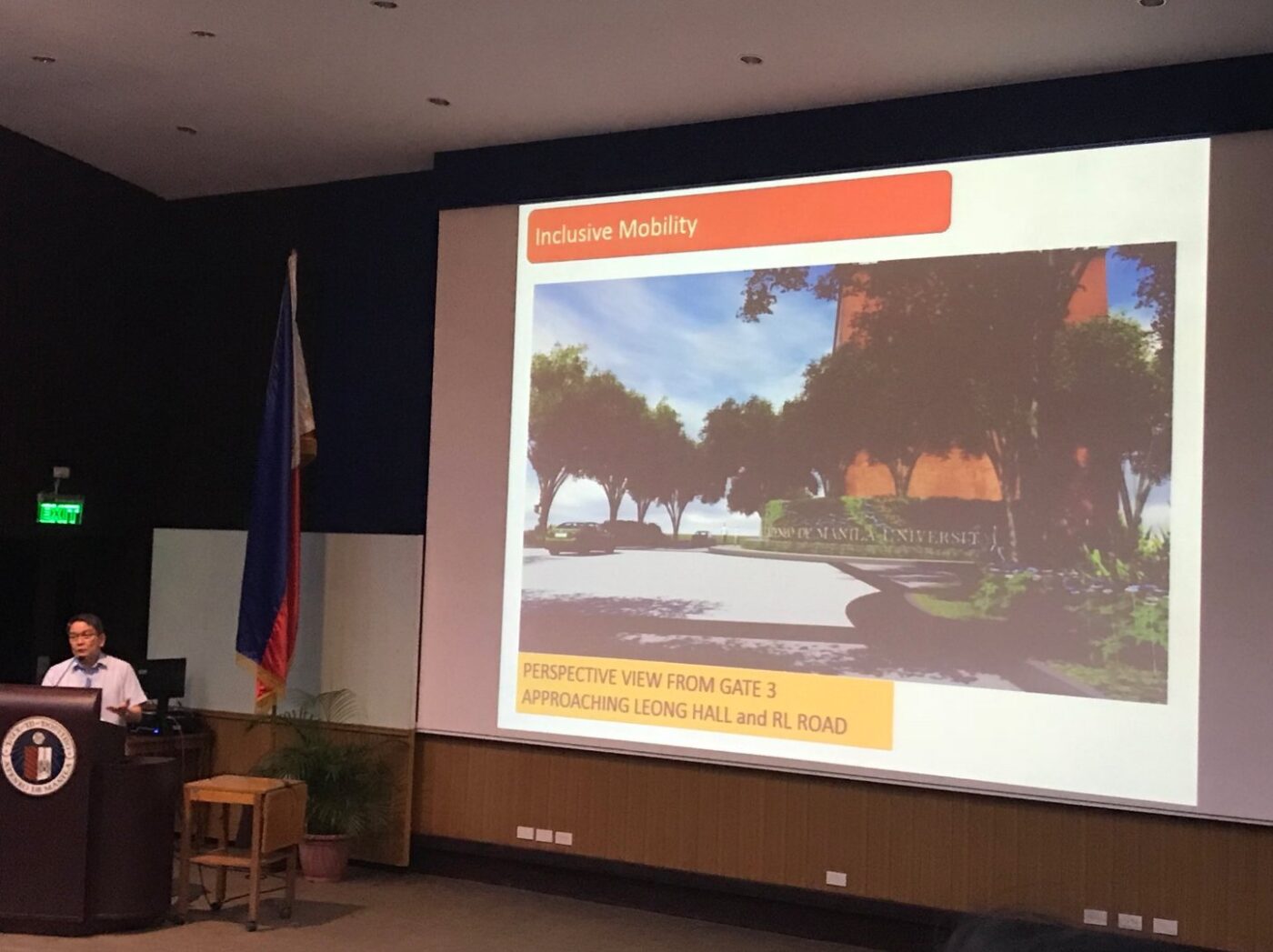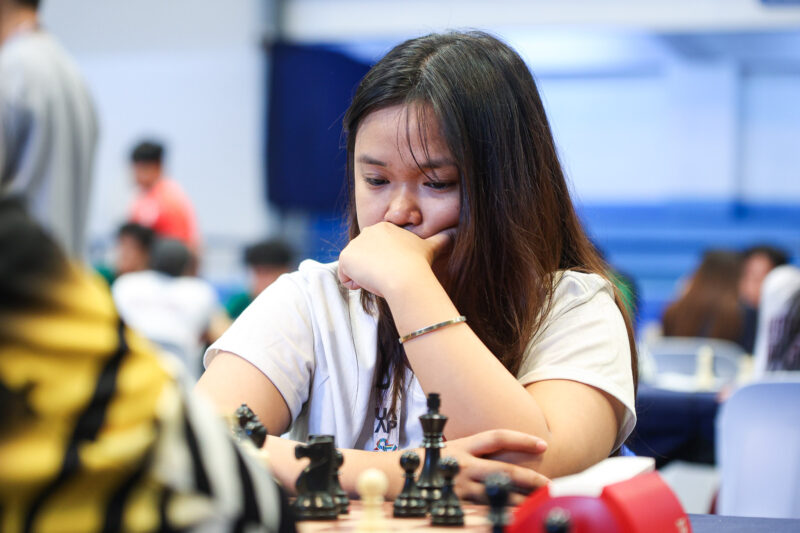MEMBERS OF the Loyola Schools (LS) community aired their sentiments on the campus master plan and the New Rizal Library road extension project at the Special School Forum on May 4 at Escaler Hall.
The forum followed the postponement of the project after LS faculty and non-teaching staff expressed their concern for the new road that would cut through the School of Management (SOM) Forest and connect the New Rizal Library to the John Gokongwei School of Management Student Enterprise Center (JSEC)/Moro Lorenzo Football Field area.
University President Jose Ramon Villarin, SJ led the discussion, which was also attended by Vice President for the Loyola Schools (VPLS) Maria Luz Vilches, PhD, together with the LS faculty, staff, students, and some members of the Ateneo Schools Parents Council (ASPAC).
Paving a new road
According to Villarin, the Department of Public Works and Highways expressed that it wants to take one lane from the perimeter leading to Gate 3 which cars use as an exit to Katipunan Avenue. The road extension was proposed to add a road parallel to the perimeter road.
He also discussed other planned structures such as one building for the LS administration, and another building that would serve as an international center. He noted that the road extension could also serve as an “artery” leading to these places.
According to Villarin, PHP 30 million was donated to fund the expenses of this road extension project. However, Villarin said he cannot disclose the name of the donor.
He presented data stating that the proposal will affect 13% of the trees on campus, and of these affected trees, 62% are mahogany. These trees are what the University is trying to “decommission” since they are not endemic to the Philippines.
“In the past we just planted trees where we wanted. We want to be more deliberate [and] purposive,” Villarin said.
He also noted that the University consulted its sustainability guidelines to plan their tree planting efforts.
Consultations for the road extension project were held in 2013, according to Villarin. He said that they have been “remiss” about the consultations, and that the complexion of the community has changed since then.
“Perhaps that’s where we were remiss; we did not continually update the community,” he said. “A consultation was done, but there was no follow-up [regarding it afterwards].
Villarin mentioned that he will bring up the concerns to the Ateneo Board of Trustees for further discussion on the matter. He also proposed to “hold smaller group consultations” among the LS community to supplement the discourse on the road extension project.
Suggested alternatives
Rizal Library Director Vernon Totanes, PhD suggested cutting off the forest area near the Facilities Management Office and the current road leading to Gate 3.
He noted that the space inside the SOM Forest is “more sacred” because it is not exposed to pollution.
“Could we move [the added two lanes] to the space closest to Katipunan? It will [shave] off trees, but at least that area is already close to Katipunan, so maybe people won’t be so dismayed,” he said.
Totanes also suggested building the proposed road around the baseball field so that people can drive around that area without touching the forest.
For Japanese Studies Director Karl Cheng Chua, the traffic situation implies that pedestrians and car owners would have to “sacrifice” for the convenience of the other, rooting from the “interrupted movement” imposed by both stakeholders.
“One of the issues we have here is in terms a lot of interrupted movement by one stakeholder,” he said. “Cars are interrupted by pedestrian lanes, pedestrians are interrupted by cars.”
Cheng Chua added that the proposed road would cause another interruption and will force the pedestrians to meet with cars.
“One way to actually reassess this is to make sure that the entrances both inside and outside the campus allow none of us to meet each other as much as possible,” he added.
Villarin acknowledged the suggestion, saying that the plan would also look at possible loading points and parking areas on campus.
Incoming Sanggunian President Hya Bendaña cited a proposal from the Mobility Forum held last April 23. One of the suggestions mentioned in the forum was to disincentivize cars from entering the campus.
She noted that adding buildings and roads would not be in accordance to this proposal, since more roads could increase congestion by making it easier for cars to enter and navigate through the campus.
Considering non-pedestrians
Meanwhile, former VPLS Assunta Cuyegkeng emphasized that while the LS community would like to preserve the greeneries on campus, it should also be taken into account that the LS is not the only stakeholder concerning the project, as the Ateneo grade school and high school are also involved in the matter.
She also mentioned that as much as the administration wants the LS campus to be as walkable as possible, there are also “other stakeholders who are not necessarily pedestrians” who should also be considered in the decision-making process.
“We have the students [and] we have the parents who are stakeholders, and we have to find a way to get to a common solution [for everyone] as much as we can,” she said.
“It’s a difficult balancing act because while many of us are pedestrians, there are [also] people who have not yet adjusted to that, and there are people who have other concerns as well,” she added.
An ASPAC parent shared the same view by saying that “people really have to sacrifice” and there is a need to “move forward” in addressing such issue on campus mobility.
“I think we just have to come up with a good compromise and just get on with it because at the end of the day, what we want is just to finish this clear for our children,” he said.
Students’ concerns and stances
Bendaña discussed the importance of the path through the SOM Forest for persons with special needs (PWSNs) in wheelchairs. Replacing the path with a road would make it more difficult for PWSNs to travel through the campus, since the current path provides them with an easier route for one to push their wheelchairs.
She also mentioned the effect of the road extension on the “rising mental health crisis” in the Ateneo. According to her, many students use the SOM Forest to cry or take breaks. She said that it is important to maintain green spaces for these people.
Bendaña mentioned a survey the Sanggunian’s Department of Strategy and Development distributed regarding the road extension project.
The results revealed that 82.6% of the respondents opposed the project, 13.0% wanted to reconsider it, and the remaining 4.3% of the respondents were in favor of it.
The document that declared the results of the survey noted that most of the respondents came from “within [the Sanggunian’s] offices” due to short notice, and that this may result in inconsistencies with the feedback of the student body.
Those that wanted to reconsider the project believe that there are other ways to decongest campus traffic.
Some of these respondents said that the cost of reducing the flora and fauna in the campus is “not worth it,” while others said that the University should state where they will move the flora and fauna to provide a green space. Others said that the proposed road would “defeat the purpose” of alternative transport solutions.
The two respondents that were in favor of the project said that it could serve as a possible solution to the campus’ traffic problem, and that adding buildings around the road could reduce overcrowding in classrooms.
Those that opposed the project mentioned the uses of the forest. The forest is home to numerous plants and animals, and it serves as a guard from pollution, noise, and warmth. It can also be used as a place to do schoolwork and projects, and its path serves as a convenient walking path.
Reasons for opposing the project also included the sentimental value of the SOM Forest and its status as the “most accessible green area” on campus.
They also argued that the project would “subliminally support” the use of vehicles in campus, and that it goes against “values and promises” to the Ateneo community for a sustainable campus.
Respondents who opposed the project referred to a study conducted by Kardi Teknomo, PhD of the Ateneo Pedestrian and Traffic Computing Laboratory and the Information Systems and Computer Science Department.
Teknomo ran a road simulation for the proposed road. Its results showed that a two-way road would only increase the current road network’s average speed by 0.03%. Adding a one-way road would only increase this by 0.01%.
Both a two-way road and a one-way road would increase the median travel time per kilometer from 90.96 to 91.01 seconds.
The study also revealed that adding a road would increase the total travel time around the road network from 18.20 minutes to 19.05 and 18.62 minutes for a two-way road and a one-way road, respectively.







